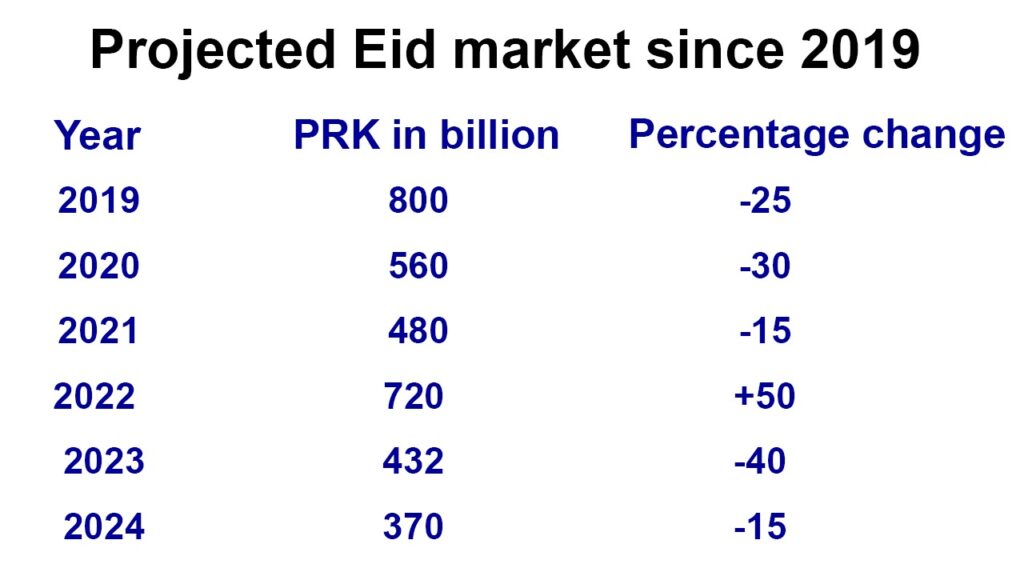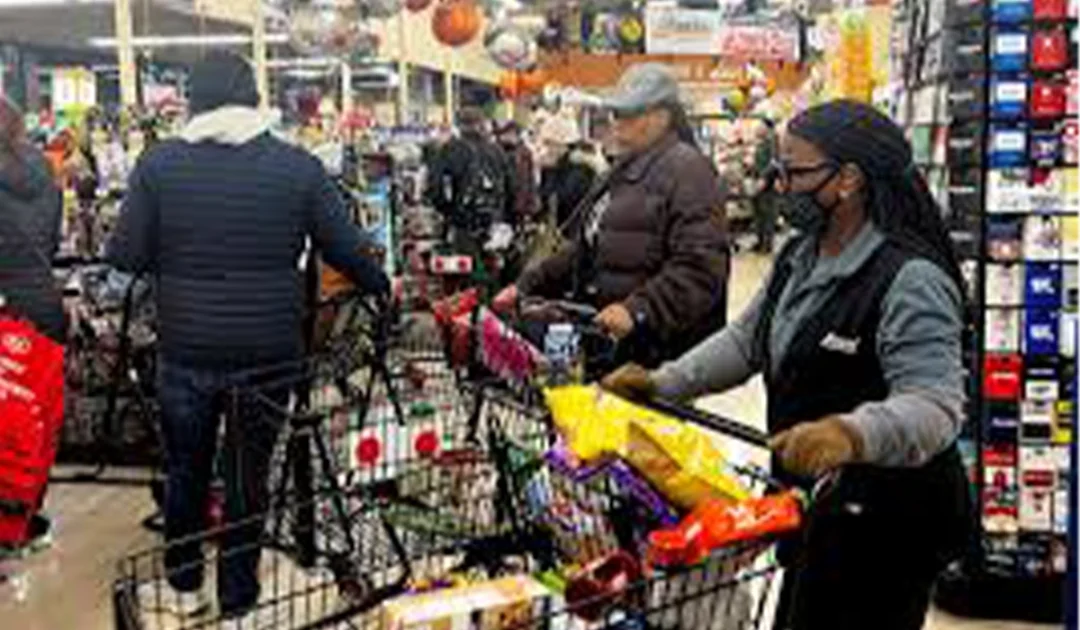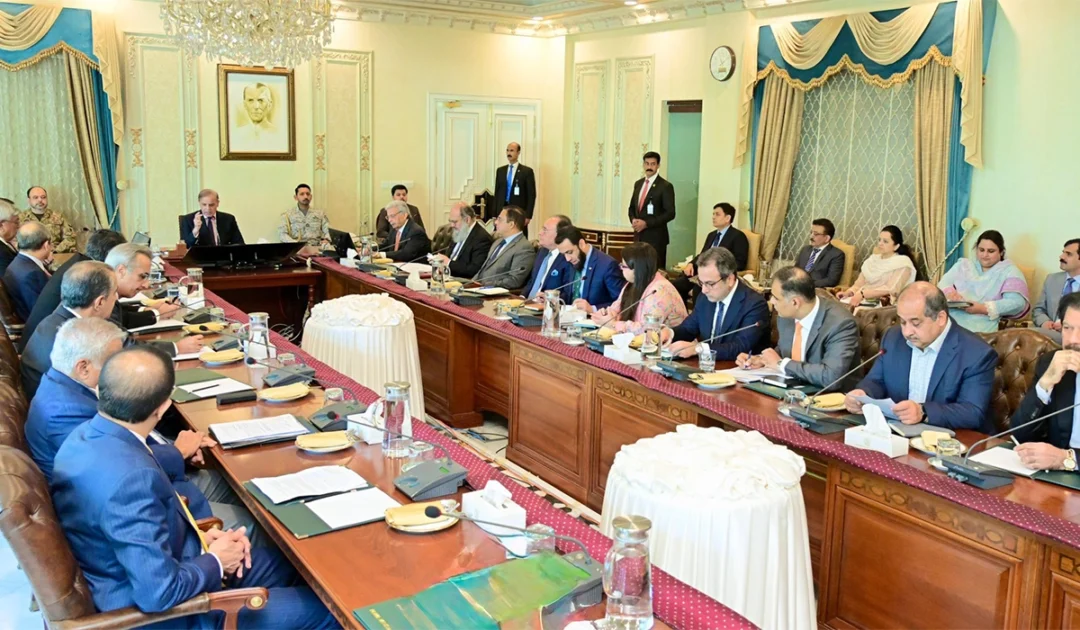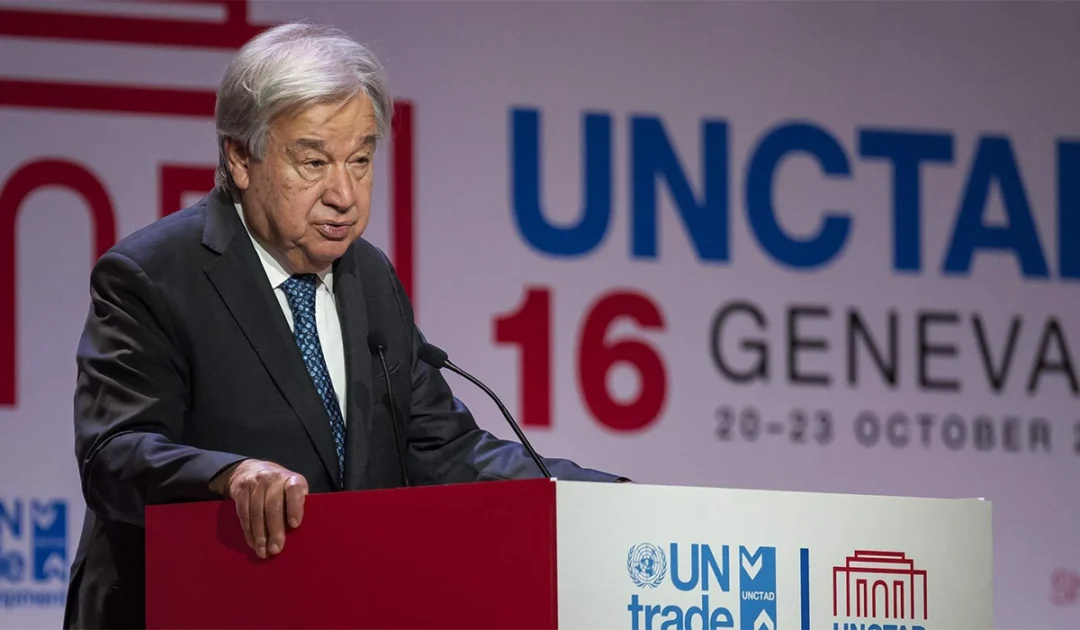Eid sales drop 15% to Rs 370 billion this year
-
- Afshan Subohi
- Apr 15, 2024

While spending had been below expectation in big cities, a significant increase in sale volumes was observed in second-tier cities.
Fueled by the resilience of determined parents striving to bring joy to their families, a frenzy was ignited in markets towards the end of mostly quiet Ramazan this year. This surge in activity prevented many companies from faltering and saved some traders with substantial inventories from shuttering their outlets.
Consequently, the decline in Eid spending was halted at 15 per cent compared to the previous year, despite a greater erosion in real family income over the same period. This resilience bolstered the Eid market to an estimated Rs 370 billion this year, compared to Rs 432 billion last year. The quoted amount translates to an Eid budget of Rs 1600 per person (derived by dividing the total spend by the total population) on an average or Rs 11000 per family (assuming a family comprises six to seven members).
The market survey and information gathered from interviews with marketeers revealed an interesting trend: the size of a family Eid budget has an inverse relationship with spending on children. When budget tightens, the percentage allocated for children increases. This year, some sources claimed that there were cases where families spent as much as half of their total Eid budget on children.
Some businessmen, such as Omer Farooq, CEO and founder Chase Value, co-founder and director at Bachaa Party, and member executive committee of Chain Store Association (CSA), expressed doubts regarding the credibility of the presented data. Based on his market insights, he contested the projected trend indicating a fall in Eid spending. In a message to the scribe, he claimed that except for the year 2020, the retailers’ Ramadan sales have been robust in previous years, and that this year’s sales have been better than last year. However, he did not share an alternative set of credible verifiable data to substantiate his assertion.
This amount is intended to cover all Eid-related expenses for a family, such as clothing, footwear, food, transport, Eidi (cash gifts distributed on the occasion) and other related expenses. In cases where people need to travel inter-city to reunite with family for the happy occasion, transportation consumes a significant portion of the family’s Eid budget.
Except for the year 2022, which witnessed a significant spike in Eid economy due to the two-year pent-up demand following the Covid period 2019-2021, as well as the gradual return of the economy to normalcy, and an increase in direct public and private funds transfers to deserving people and enterprises, the Eid spending trend had been downward looking over the past five years. (See illustration).
Another market expert from Lahore also emphasised that while sales in big cities might be below expectations, the significant increase in sale volumes in second-tier cities, such as Gujrat, Faisalabad, Jehlum, Hyderabad, Sukkur, etc., compensated for this loss. Furthermore, he noted that any decline in volumes was offset by gains in revenue due to higher prices.

Others, however, representing various market associations such as Atiq Mir, Akhtar Shahid, Aziz Ahmed, Feeroz Ahmed, Rafique Jadoon, among many others, emphasised the significant shrinkage in the Eid market due to eroding buying power of the populace. Badruddin Kakar, a business leader from Balochistan, attributed the financial stress experienced by average households in the country to stagflation (low growth accompanied with high inflation). “People aspire to celebrate Eid by fulfilling their families’ desires at least once a year, but after providing for necessities and covering high utility charges, they are left with little to spare for leisure spending. Nevertheless, they still try to make most of whatever little they could gather for Eid,” he remarked.
The data provided has been derived from informed estimations, and the projected variations in the market, expressed in percentages, are based on input from market sources, including representatives of traders, business executives and experts. Given the absence of any credible platform quantifying the peak phase in Pakistan’s spending calendar, this exercise spanning over a decade, serves as a reference point and offers insights into consumer behaviour during this period. The prevalence of cash-based transactions without a verifiable money trail adds to the complexity of the exercise.
According to market sources, footwears performed exceptionally well this year compared to other segments. “People likely postponed purchasing shoes, choosing to wait until Eid. Some even delayed buying new pairs for their children at the beginning of the academic year, opting instead to gift them new shoes for Eid,”explained an expert,
The Pakistan Bureau of Statistics (PBS), the State Bank of Pakistan (SBP), Federal Board of Revenue (FBR) and the federal ministry of finance were approached, as in previous years, for input this year as well. However, the higher-ups in these key institutions and relevant departments confirmed that they did not have evidence to either accept or dismiss the projections made. Furthermore, they were not aware of any other entity, public or private, that has worked on quantifying and analyzing the Eid economy in the country.
Chief Statistician Dr Naeem uz Zafar of PBS mentioned Household Income and Expenditure Survey (HIES), which is conducted every two years and provides insight into changing consumer preferences. However, he clarified that it does not cover spendings on special occasions like Eid. “The last HIES was conducted in 2022, and next is scheduled to start in July this year,” he shared.
The market survey and information gathered from interviews with marketeers revealed an interesting trend: the size of a family Eid budget has an inverse relationship with spending on children. When budget tightens, the percentage allocated for children increases. This year, some sources claimed that there were cases where families spent as much as half of their total Eid budget on children.
The soaring prices of imported items due to currency devaluation over the past year drove many consumers towards local brands. Those with smaller budgets opted for unbranded articles to suit their affordability. Consequently, make-shift stalls and bargain markets attracted larger crowds.
According to market sources, footwears performed exceptionally well this year compared to other segments. “People likely postponed purchasing shoes, choosing to wait until Eid. Some even delayed buying new pairs for their children at the beginning of the academic year, opting instead to gift them new shoes for Eid,” explained an expert, shedding light on the surge in the footwear market.





